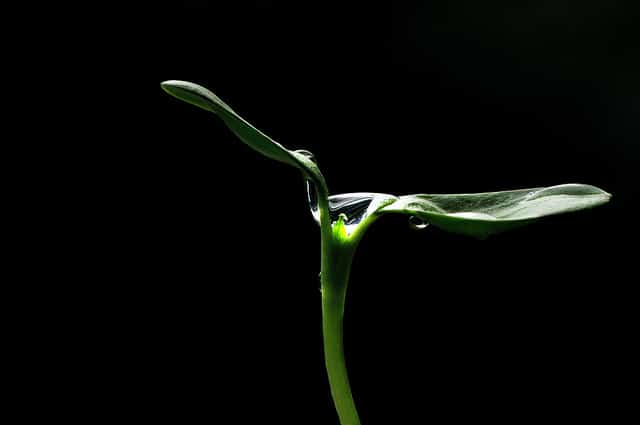
Kambo can treat migraines, but the intense ceremony may also trigger migraines in some people. Image source: Wikimedia user Doc James.
Before taking kambo for the first time, I read as many first-hand experiences as I could find. One thing that stood out to me was that many people reported suffering intense, migraine-like headaches while using kambo. Some even experienced full-blown migraines that lasted after the ceremony was finished. This didn’t make sense to me since practitioners say kambo can be used to treat migraines. How could a medicine both cause migraines and treat them?
What I learned was that the physical properties of kambo help reduce the frequency and intensity of migraines, with the positive effects lasting for months after a treatment. But the experience of taking kambo can be so intense that, for some people, it can actually trigger a migraine. For migraine sufferers, a single migraine during a kambo ceremony might be worth the long-lasting treatment, but it also may be possible to get the best of both worlds—reducing migraine symptoms without triggering an attack.
How Kambo Reduces Migraine Symptoms
It is thought that migraines are caused by cardiovascular problems such as dilation of blood vessels in the brain, high blood pressure, or imbalances in the serotonin system that reduce the functioning of the central nervous system. Another cause may be environmental toxins, as toxic headaches—which are similar to migraines—are caused by negative reactions to toxins in the body. Migraines and migraine-like symptoms result from a combination of these factors, and people experience different types of headaches and migraines based on their physiological roots. However, kambo is a promising treatment option because it contains several bio-available peptides that address the potential causes of migraines.
- Cardiovascular problems: Two bio-available peptides in kambo—caerulein and sauvagine—cause a long-term drop in blood pressure which may ward off tension headaches caused by high blood pressure. At the same time, these peptides increase the body’s ability to handle pain and stress, potentially reducing the intensity of migraines and making them more manageable with pain relievers.
- Insufficient serotonin: Kambo causes an intense physical reaction that triggers the body to produce more endorphins. In turn, an increase in endorphins can lead to increased serotonin production, which is why many people feel calmer and happier in the weeks following a kambo ceremony. The increased serotonin may help balance the central nervous system and reduce the frequency of migraines.
- High levels of toxic substances: The deep purging during a kambo ceremony cleanses the body of toxic substances, so if your migraines are triggered by a buildup of toxicity, a kambo “reset” could cure your headaches.
Kambo is a complicated substance with thousands of peptides—many of which are active in humans—and the medicine may have even more beneficial factors than we are currently aware of. At the same time, migraines are not fully understood by medical professionals, so be aware that the way kambo treats migraines may be more complex than we currently understand.
Factors That May Cause a Migraine During Kambo Use
If kambo has the potential to treat migraines, why do some people suffer from migraines or migraine-like headaches during a kambo ceremony? There are several reasons:
- Fasting: It is generally recommended to fast for at least twelve hours before a kambo ceremony because fasting increases the efficiency of the medicine and reduces the more unpleasant aspects of vomiting. But for many migraine-sufferers, skipping meals can trigger an episode.
- Dehydration: Vomiting and sweating during the ceremony can cause you to become dehydrated, which may lead to a migraine.
- Vasodilation: Phyllokinin and phyllomedusin are potent blood vessel dilators that allow the peptides in kambo to cross the blood-brain barrier. But if your migraines are caused by vasodilation (and helped with vasoconstrictors like caffeine), you may experience migraines when taking kambo.
- Physical stress: Kambo is a physically intense experience, so if your migraines are brought on by physical stress, you may experience one during kambo treatment.
- Emotional stress: First-time kambo users may feel fear and apprehension, potentially triggering migraines caused by emotional stress.
- Increased sensory perception: Kambo heightens your sensory awareness, which is why kambo is traditionally used by hunters. But if you are already sensitive to sights, smells, and sounds, the extra sensory perception could bring on a migraine.
Most of these factors have to do with the ceremony and how the medicine is administered rather than the medicine itself. This means that most of the migraine triggers related to kambo can be controlled by you and your practitioner, and you may be able to take the medicine without having a migraine.
How to Safely Use Kambo If You Suffer From Migraines
If you suffer from migraines, it is a good idea to take extra steps to ensure the ceremony will be safe for you. Below are some ways to mitigate the risk of a migraine attack during your treatment.
- Work with a practitioner experienced with migraine treatment: Select a kambo practitioner who has worked with migraine patients before to ensure they can guide you safely through the ceremony and most efficiently treat your migraines.
- Know your migraine triggers: Knowing the type of migraine you experience and what triggers you will help you set up a safe ceremony.
- Understand the ceremony thoroughly: To reduce stress as much as possible, you should educate yourself about the physical and emotional aspects of a kambo ceremony. You can work with a psychedelic therapist or a kambo expert before the treatment to prepare yourself. Talking to other users and reading about kambo experiences can also be helpful.
- Complete a test session: A test session involves applying a small amount of kambo—usually with no physical effects—to make sure you won’t have an adverse reaction. Many people skip this step, but it is important if you want to reduce the risk of experiencing a migraine during the ceremony.
- Set up a dark, quiet place for your ceremony: Kambo ceremonies often take place outside during the day or in a room where practitioners use incense or soft music. If these are triggers for you, request a private ceremony in a quiet, dark room without perfumes or other scents.
- Do not fast before your ceremony: Talk to your kambo practitioner to determine how long you need to wait after your last meal before your kambo treatment. Instead of fasting completely, consider light meals such as soup or juices before your treatment.
- Stay hydrated: Although drinking water may cause more intense vomiting, it is important for migraine sufferers to stay hydrated. Your kambo practitioner should be able to direct you as to the best times to drink water and what amount you should drink.
Psychedelics are complex substances that affect the body in several ways at once. But as with any medication, the unwanted side effects some patients experience during psychedelic therapy can be mitigated with careful dosage and sufficient preparation. If you suffer from migraines or a similar type of headache and plan to use kambo, it is critical that you communicate with an experienced practitioner and come up with a treatment plan that will fit your particular needs. This will allow you to experience kambo safely and increase the chances of successfully reducing your migraine symptoms.










